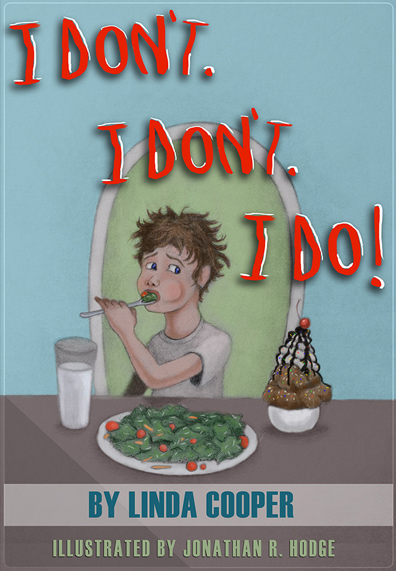A rhythmic three-line story pattern could help children cope in the time of the coronavirus, said Linda Cooper, author of the children’s picture book, I Don’t. I Don’t. I Do!
The picture book aims to teach children a timeless truth: That often you first have to do what you don’t want to do so that you can then do what you do want to do.
This approach can be easily adapted by parents, teachers and homeschool instructors to help children deal with safety measures designed to protect them from Covid-19, Cooper said.
For example, if your children are getting frustrated about social distancing, she said, you could compose a three-line I Don’t. I Don’t. I Do! not only to affirm their feelings, but to underscore how the measures benefit them:
I don’t want to stay inside anymore.
I don’t want to wear a face mask.
But I do want to stay safe from the coronavirus!
Acknowledging and affirming a child’s feelings can go a long way to helping them cope, Cooper said, particularly if it is followed by possible solutions to their dilemma. Another example is:
I don’t want to wash my hands.
I don’t want to wash my hands for 20 seconds.
But I do want to help Mommy bake chocolate chip cookies!
What’s more, I Don’t. I Don’t. I Do! can be turned into a game, using its simple three-line template to give voice to children’s feelings and to tap their creativity, said Cooper, a former English teacher and mother of five.
It also gives parents and teachers an opportunity to share their feelings, so children realize that they too sometimes have to do things they don’t want to do to achieve a goal.
Parents might share how they struggle to eke up the motivation to make dinner every night. Consider the following three liner, she said:
I don’t want to wash and cut all the vegetables.
I don’t want to stand in the hot kitchen.
But I do want us to have a yummy, healthy dinner!
Teachers might share how hard it is to prepare lesson plans, but do so to make learning fun or more interesting.
After reading or hearing a few I Don’t. I Don’t. I Do! examples, kids quickly catch on to this children’s picture book’s repetitive structure, which can turn even a brewing temper tantrum into a game.
If a child doesn’t want to put on shoes and a jacket, Cooper said, parents might playfully ask, “But you do want to go outside, right?” This can be turned into their own personal I Don’t. I Don’t. I Do! that acknowledges their feelings and identifies what they need to do to obtain a desired result.
The dilemmas and impasses are countless. Perhaps children don’t want to play with a younger sibling or share their things, but they do want to be a good big sister or brother. Or they don’t want to pick up their toys, but they do want a hug or to hear a favorite children’s picture book.
Another approach to creating an I Don’t. I Don’t. I Do! is to shift the focus from a problem to problem solving, by focusing on what kids want, or want to do, and how they might get there.
Perhaps children want a favorite dessert. Constructing an I Don’t. I Don’t. I Do! around that desire could involve a discussion about how they would first have to eat their broccoli or spinach. Or wanting an allowance could lead to the recognition that they first need to do some chores. Just as wanting to watch TV might require them to first finish schoolwork.
In short, using the I Don’t. I Don’t. I Do! children’s picture book story pattern can acknowledge children’s feelings, help them solve their own conundrums and realize that to get what their hearts desire, they may have to make compromises or do things they don’t really feel like doing. Truly a life lesson.
